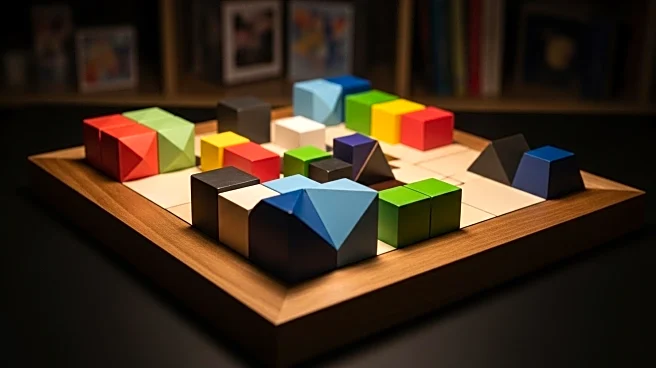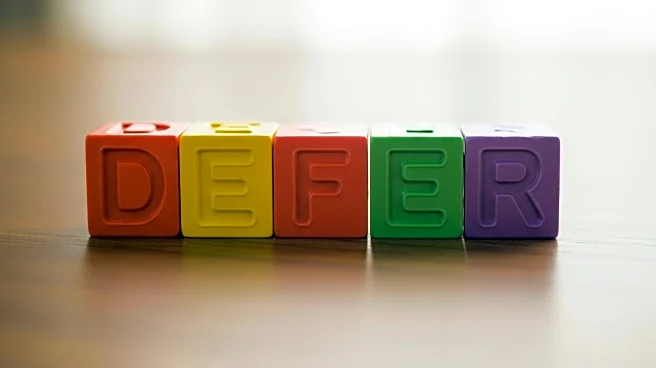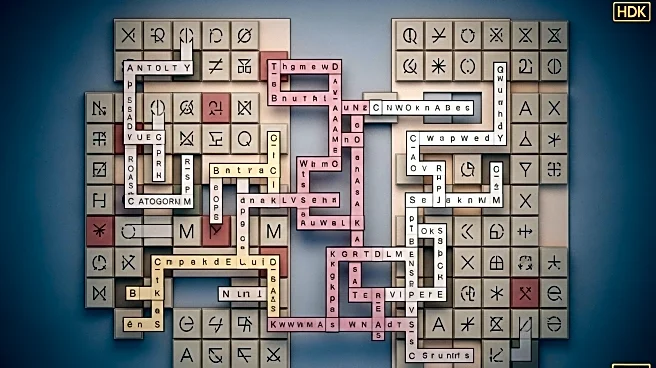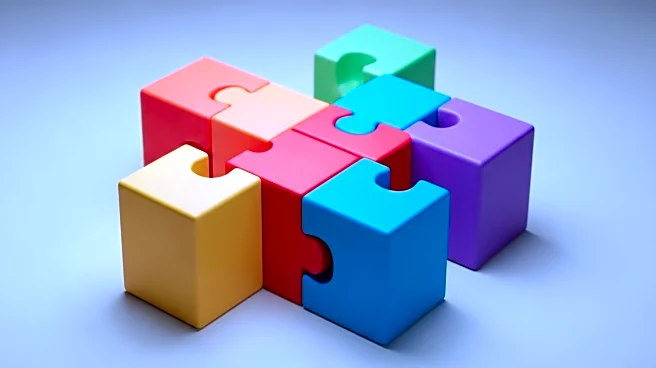What's Happening?
The New York Times has launched a new interactive puzzle called Connections, which challenges players to identify relationships between words based on various themes. The puzzle includes categories such as touchscreen gestures, relaxation techniques, restaurant seating options, and vegetables with the first letter removed. Players can engage with the puzzle through hints and answers provided daily, enhancing their experience with a Connections Bot that analyzes their performance. This new addition to the Times Games section allows registered users to track their progress, including win rates and streaks.
Why It's Important?
The introduction of the Connections puzzle by The New York Times represents a significant expansion of its digital gaming offerings, catering to a growing audience interested in interactive and educational content. This move aligns with the broader trend of media companies diversifying their digital platforms to engage users beyond traditional news consumption. By offering puzzles that stimulate cognitive skills and provide entertainment, The New York Times is likely to attract a wider demographic, potentially increasing subscription rates and user engagement. This development also highlights the importance of digital innovation in maintaining relevance in the competitive media landscape.
What's Next?
As The New York Times continues to develop its gaming section, further enhancements and new puzzles may be introduced to keep the audience engaged. The success of the Connections puzzle could lead to collaborations with educational institutions or tech companies to expand its reach and functionality. Additionally, feedback from users may drive improvements in the puzzle's design and interactivity, ensuring it remains a popular feature. The Times may also explore integrating these puzzles into its mobile app to increase accessibility and convenience for users.
Beyond the Headlines
The launch of the Connections puzzle may have broader implications for the digital media industry, as it exemplifies the shift towards interactive content that combines entertainment with cognitive challenges. This trend could influence other media outlets to develop similar offerings, fostering a competitive environment that prioritizes user engagement and innovative content delivery. Furthermore, the puzzle's focus on wordplay and thematic connections may contribute to educational initiatives, promoting literacy and critical thinking skills among users.










